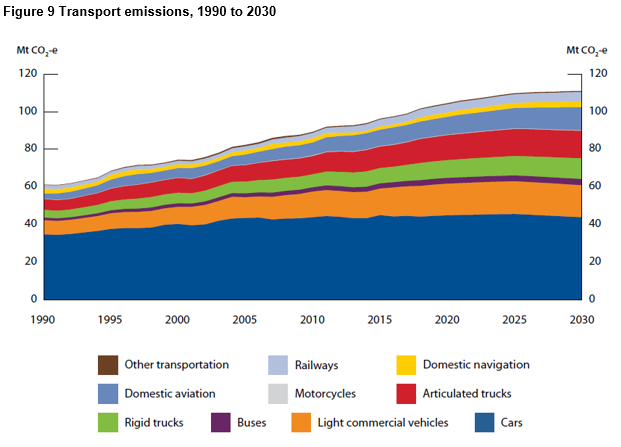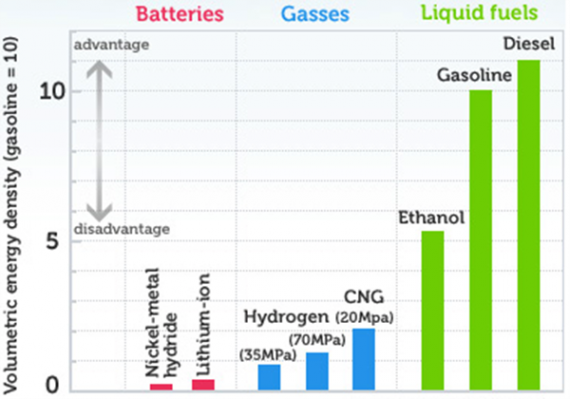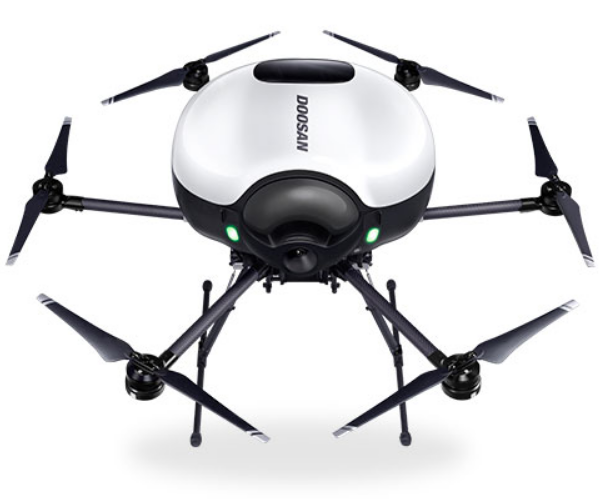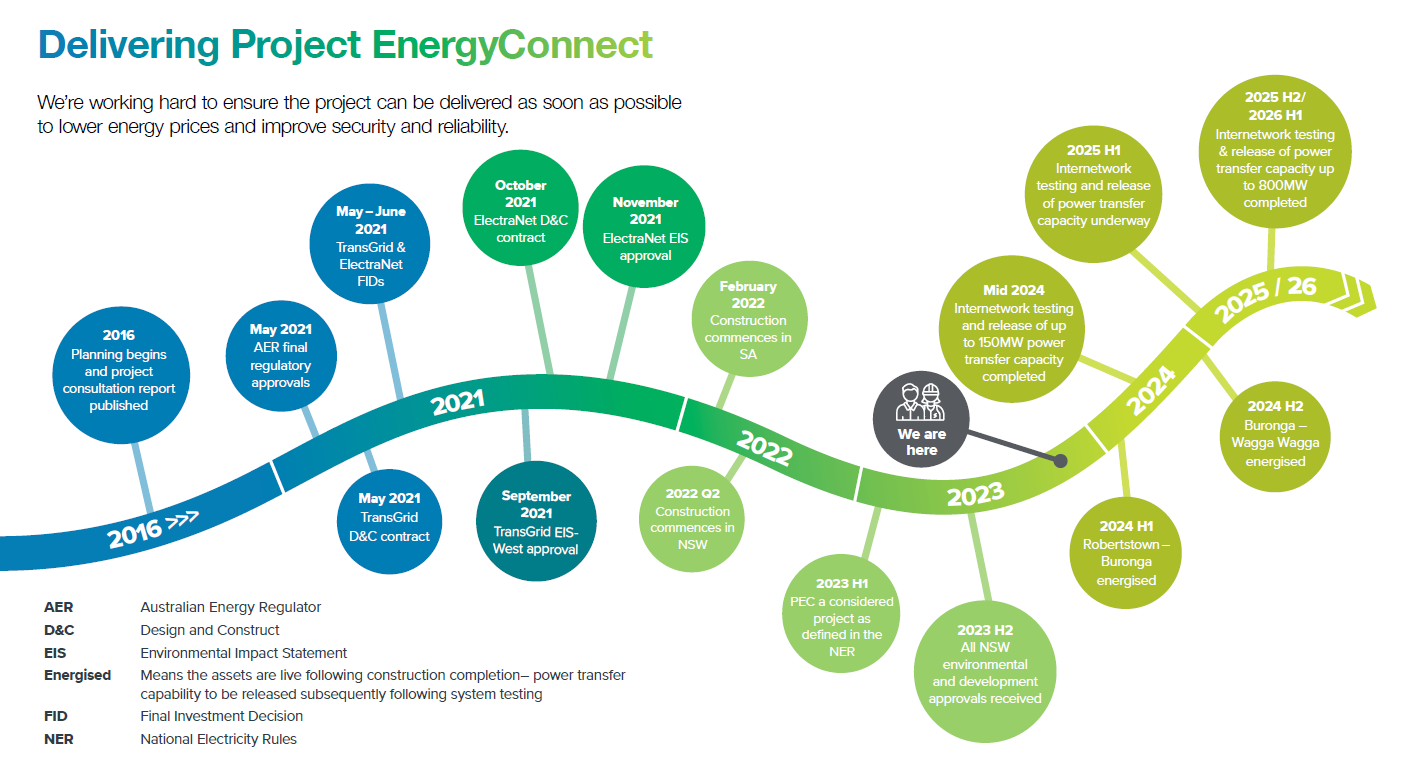Flying Hydrogen Airlines?
Australia’s transport sector is growing significantly, and its emissions are increasing accordingly, up seventy per cent since 1990 and projected to rise another 10 per cent by 2030. Similar patterns are occurring across the globe.
Mobility is a sector that is hard to decarbonise, and air travel is possibly the most difficult.

Figure 1: Australia’s transport emissions, 1990 to 2030 (Source: Department of Energy and the Environment, 2018[i])
A few weeks ago, Qantas[ii] announced a target of net-zero carbon emissions by 2050. The target would include doubling the number of flights that are carbon offset, capping net emissions from 2020 and investing $50 million to help develop a sustainable aviation fuel industry.
So how can emissions from air travel reach net-zero?
1. Reduce travel
The obvious way to reduce emission is to reduce travel. However, this probably isn’t optimal nor a popular solution.
2. Offset emissions
A second option is to offset the emissions from travel, as already offered by many airlines globally.
The offset option allows passengers to support activities that reduce emissions (in other sectors) equivalent to the emissions produced from their flight. Or using the Carbon Neutral[iii] definition:
A carbon offset (or carbon credit) is generated from an activity that prevents, reduces or removes greenhouse gas emissions from being released into the atmosphere to compensate for emissions occurring elsewhere.
The carbon offset by these projects is verified and can support renewable energy projects, methane capture, waste diversion, energy efficiency or reforestation.
3. Decarbonise fuel
Decarbonising aviation fuel seems to be the main option for planes to become zero emissions.
Selecting the correct fuel is a major consideration.
The first powered flight[iv] by the Wright brothers in 1903 used an air-liquid fuel mixture in an engine to power the propellers. Many improvements have been made since then, but liquid fuels still power air travel.
The main reason for this is the energy density provided by liquid fuels. Modern aircraft generally need high-density fuels that can withstand a wide range of conditions. For example, at cruising altitude the temperature often drops below -55°C, while planes sitting on tarmacs can reach more than 45°C. The fuel used needs to be safe and effective across all these temperatures.
Energy density and weight
The fuel density is important. Any excess weight for fuel means less cargo and/or fewer paying passengers.
Figure 2 illustrates the differences in energy densities for liquid fuels, gaseous fuels and batteries. Liquid fuels are dominant and can provide the required energy density for air travel.
The Huron Clean Energy website[v] indicates that using batteries to replace all the liquid fuel for a Boeing 777 would make the aircraft 40 times heavier than its maximum take-off weight.
Clearly, batteries are not currently a practical option for reducing emissions from commercial flights.

Figure 2: Energy density of different fuels (Source: Huron clean energy[vi])
Biofuels
A biofuel may be a preferred option for decarbonising air travel. Biofuels retains the benefits of a liquid fuel and may also create others through a circular economy approach and by utilising organic waste to provide biofuels.
Trials of biofuels in aviation have been undertaken. For example, from Qantas:
On 13 April 2012, Qantas operated Australia’s first commercial flight powered by aviation biofuel using an Airbus A330. The Airbus A330 was powered with a 50:50 blend of biofuel and conventional jet fuel in one engine. Derived from used cooking oil provided by SkyNRG, the life cycle carbon footprint of the biofuel component of the blend was approximately 60 per cent smaller than that of conventional jet fuel[vii].
The biofuel roadmap[viii], to be delivered by ARENA by mid-2020 should consider a pathway for commercial-scale opportunities for using biofuels in air travel. Hydrogen also has a role here as it could be used as a feedstock in the production of biofuels.
4. Drones
While fuel cell and battery-powered commercial flights are a long way from reality, there are other opportunities.
Drones are currently used to deliver packages and advances are increasing payload and range. Earlier this month, a hydrogen-powered fuel-cell drone managed a 1h 43m ocean crossing to transport medical samples between two islands in the Caribbean[ix]. This drone can carry up to 5 kg, which is still a long way from competing with commercial flights that deliver many tonnes across the globe. However, the drone does demonstrate a new application for the use of battery and fuel cell technology.

Figure 3: A fuel cell drone with a payload of up to 5 kg (Source: Doosan Industries[x])
To wrap up
Reducing emissions from commercial airline operations is difficult. The most practical approach is by using biofuels, and this already has been tested as a real solution.
Using batteries or fuel cells for air transport is currently limited to drones delivering small packages over relatively short distances. With further technological developments, these technologies could support larger air deliveries over large distances in the future.
References
[ii] https://www.qantasnewsroom.com.au/media-releases/qantas-group-to-slash-carbon-emissions/
[iii] https://carbonneutral.com.au/carbon-offsets/
[iv] https://en.wikipedia.org/wiki/Wright_brothers
[v] http://www.huroncleanenergy.com/storage-for-renewable-energy/
[vi] http://www.huroncleanenergy.com/storage-for-renewable-energy/
[vii] https://www.qantas.com/travel/airlines/sustainable-aviation-fuel/global/en
[viii] https://arena.gov.au/news/arena-to-develop-roadmap-to-boost-bioenergy-opportunities-in-australia/
[ix] https://newatlas.com/drones/fuel-cell-drone-ocean-crossing/


